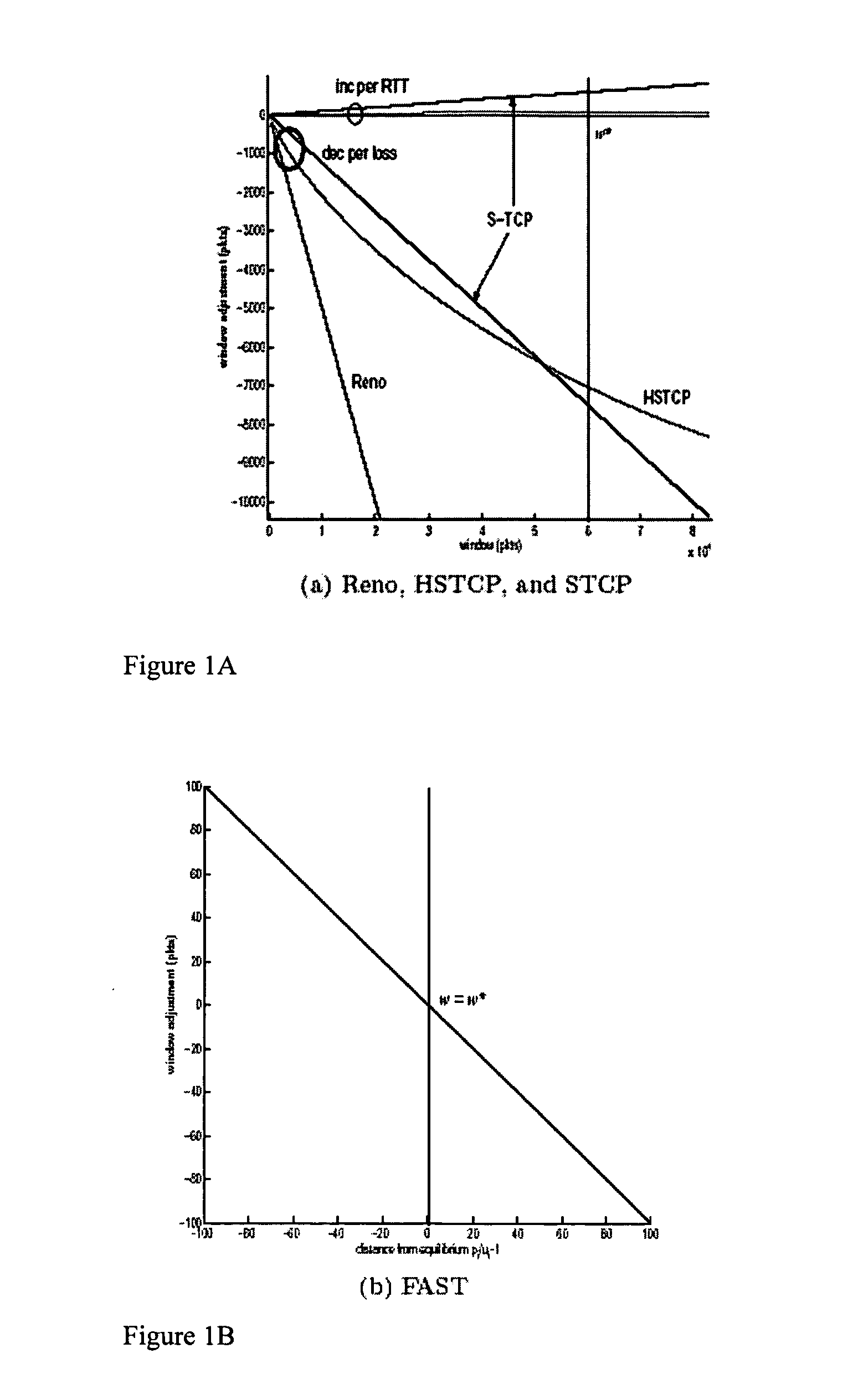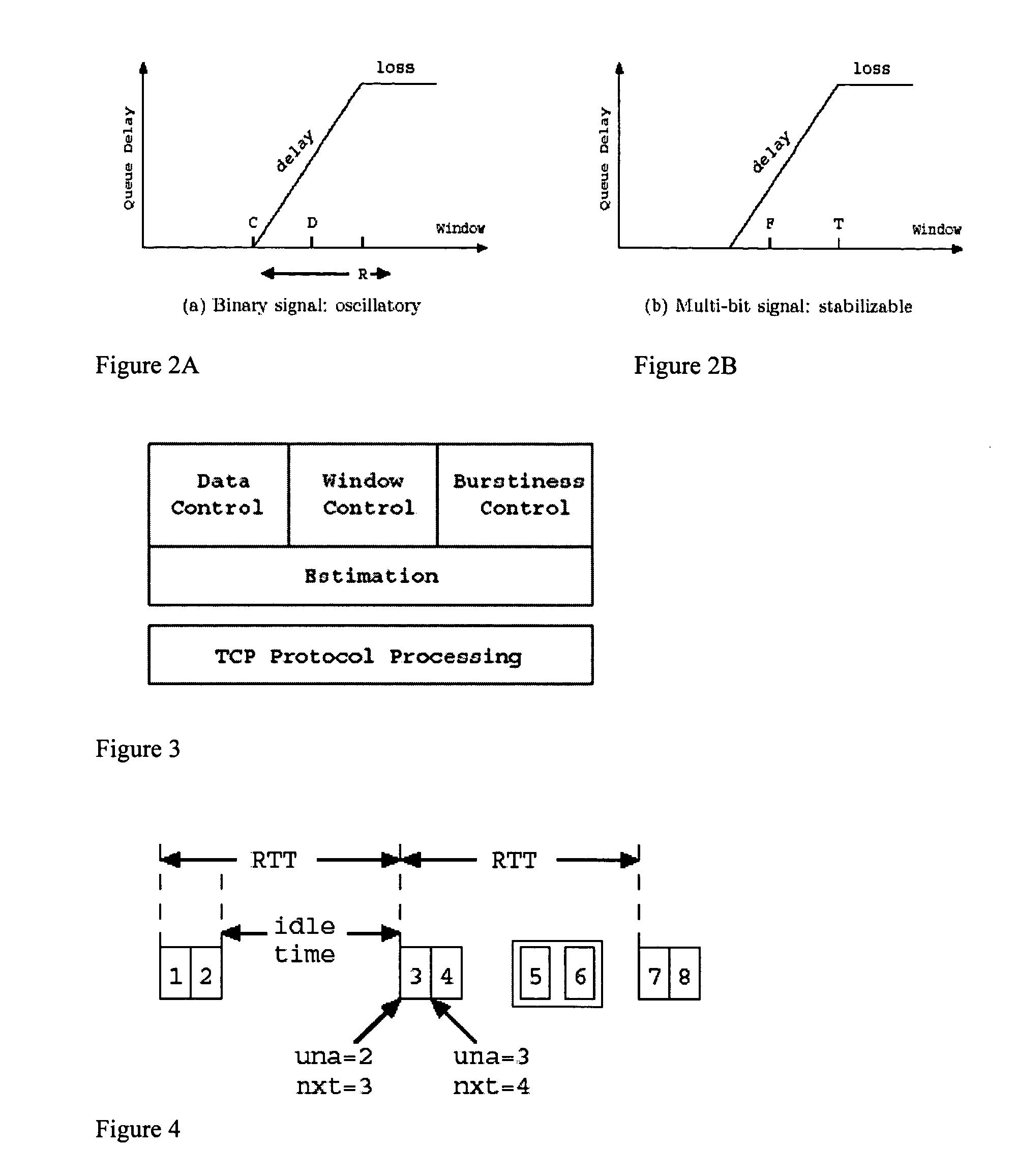Method and apparatus for network congestion control
a technology of congestion control and network, applied in the field of networks, can solve problems such as noisy measurement of delay, and achieve the effect of maintaining stability and high utilization
- Summary
- Abstract
- Description
- Claims
- Application Information
AI Technical Summary
Benefits of technology
Problems solved by technology
Method used
Image
Examples
Embodiment Construction
The embodiments of the present invention are a method and an apparatus for network congestion control. In the following description, numerous specific details are set forth to provide a more thorough description of embodiments of the invention. It will be apparent, however, to one skilled in the art, that the embodiments of the present invention may be practiced without these specific details. In other instances, well known features have not been described in detail so as not to obscure the invention.
The present invention is a delay based scheme that utilizes an equation-based packet-level implementation with an explicit estimation the of end-to-end congestion measure qi(t). This allows for the elimination of packet-level oscillations that are due to the binary nature of the congestion signal. The motivation for the present implementation is as follows.
As noted above, the congestion windows in Reno, HSTCP, and STCP evolve according to: w.i(t)=κi(t)·(1-qi(t)ui(t))(10)
where...
PUM
 Login to View More
Login to View More Abstract
Description
Claims
Application Information
 Login to View More
Login to View More - R&D
- Intellectual Property
- Life Sciences
- Materials
- Tech Scout
- Unparalleled Data Quality
- Higher Quality Content
- 60% Fewer Hallucinations
Browse by: Latest US Patents, China's latest patents, Technical Efficacy Thesaurus, Application Domain, Technology Topic, Popular Technical Reports.
© 2025 PatSnap. All rights reserved.Legal|Privacy policy|Modern Slavery Act Transparency Statement|Sitemap|About US| Contact US: help@patsnap.com



